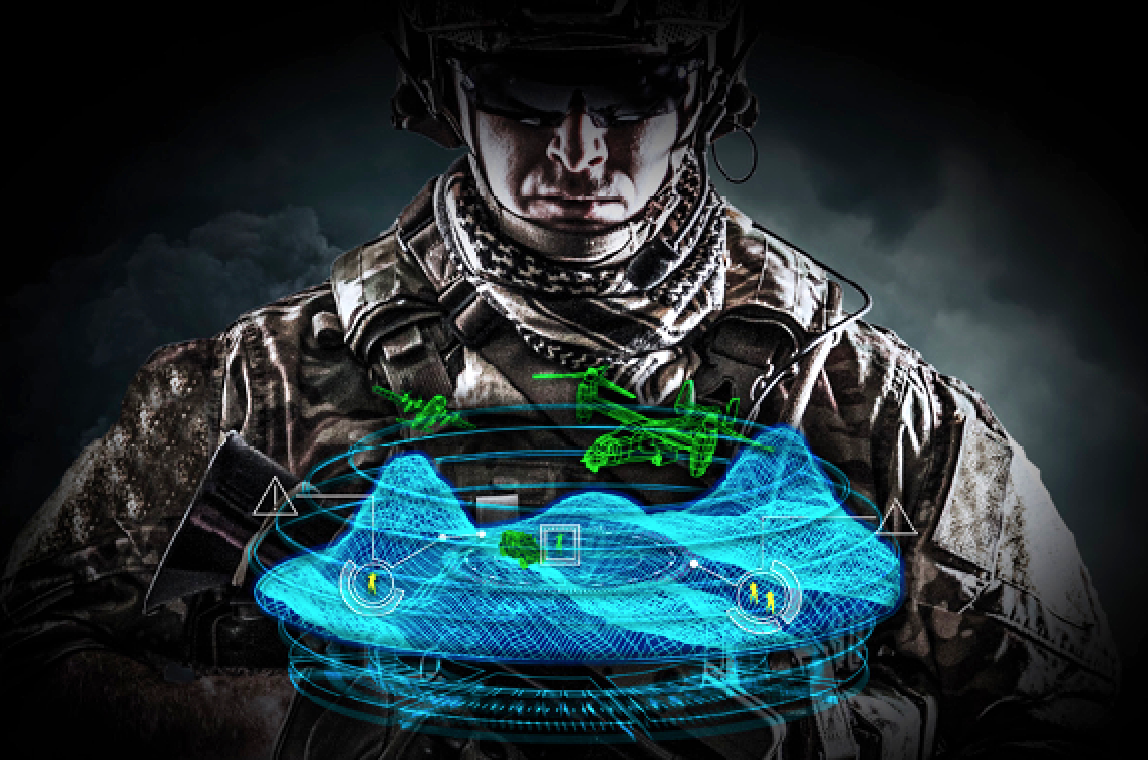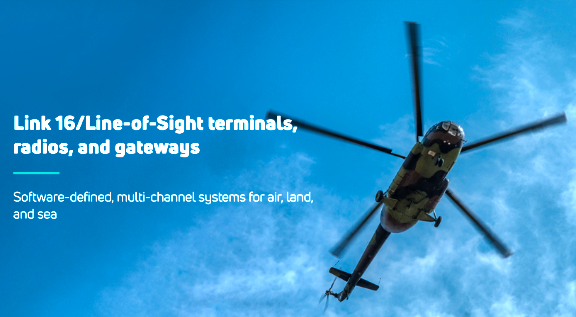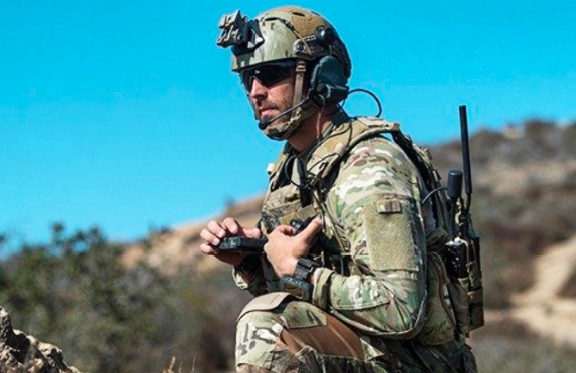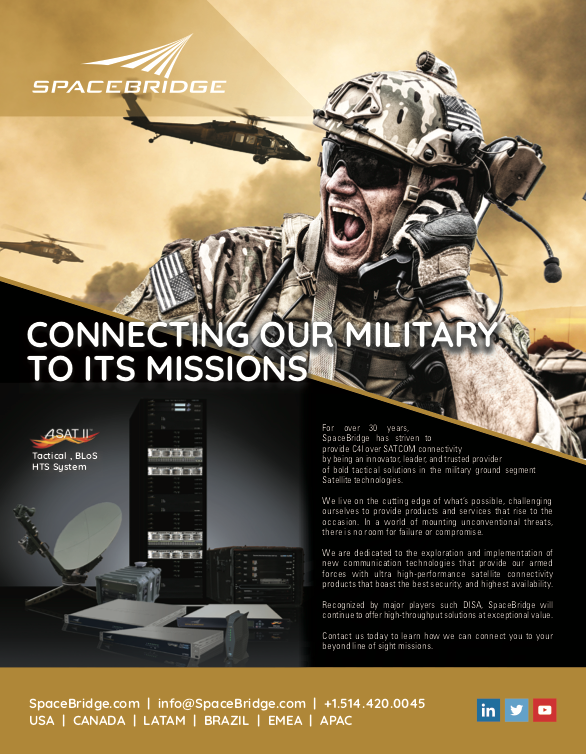A Briefing With Joel Babbitt, Army Business Development
The U.S. military is in the midst of a dramatic transformation.
As the Joint Chiefs of Staff noted in the 2018 National Defense Strategy, the speed and breadth of technological transformation “risks eroding the conventional overmatch to which our nation has grown accustomed.”

U.S. military advantage, and the technological superiority upon which it has rested, the strategy stated, is now contested by great-power adversaries in every domain — land, sea, air, space, and cyberspace.
U.S. military dominance is no longer a certainty in any domain, in many regions, and at most times. This is increasing the chances that an adversary’s actions may force the U.S. military and its allies into a war — be it a regional war or global, a limited war, or total.
To retain its battlefield dominance and maintain global stability, the strategy stated, the U.S. military needs to “gain and maintain information superiority” — the ability to gather, analyze, and present to commanders anywhere in the world the data they need to make better decisions — and do it faster than the enemy. That means identifying targets, confirming no friendlies or civilians are in the target area and delivering munitions — quickly.
That’s where Viasat comes in: providing interoperable technologies, services, and expertise that facilitate stitching together that global decision chain in a resilient and secure fashion, boosting information superiority for the U.S. military — even in the intensity of battle that a great-power war would bring.
Traditionally, U.S. forces have cobbled together that capability between stove- piped service technologies, explained retired U.S. Army Colonel Joel Babbitt, who recently joined Viasat Government Systems as vice president for Army business development and strategy.

Joel Babbitt
“You have a guy with a map and a pencil, managing two radios, a computer, and multiple targeting devices. It’s like playing a cello in a marching band or dragging your office into the middle of a battle,” Babbitt said. “He’s primarily using voice communications, both with higher headquarters and with the forward observer on the ground who’s got eyes on the target. The forward observer then has to help the pilot to identify a target.”
This, he says, makes targeting a process ripe for improvement.
Forward observers use a “nine-liner” standardized communications format to transmit — via voice communications — the location of the target and nearby friendly forces, once it’s been manually gathered and collated.
This process, however, can present risks to warfighters requesting close air support (CAS).

Pulling the Threads Together

Fortunately, advanced U.S capabilities, enabled by Viasat’s game-changing technology, are automating and making the process much less prone to error. Capabilities now include tools such as the Tactical Assault Kit (TAK), an open- source, geolocation software package built to enable situational awareness and tracking of friendly forces.
Then there’s Tactical Radio Application eXtension (TRAX), a software package that creates a common data layer that enables stove-piped data sources and applications to communicate and share data across networks via multiple communications pathways.
Viasat’s network and tactical data link expertise is the thread that pulls these capabilities together to improve safety for U.S. warfighters on the tactical edge.
“Using Viasat’s Link-16 capabilities, Special Operations Forces reduced that 15-30 minute process (to call in CAS) down to 15-30 seconds,” Babbitt said. “It has become seamless, it all works together to produce this common operational picture that allows immediate, accurate responses to battlefield threats.”
Link 16 is the foundational network that delivers this critical, real-time situational awareness — a secure, resilient, and interoperable communications protocol that joins these capabilities together, enabling that encrypted global decision-chain for identifying and engaging threats to be used across services and among allies.
Link 16 terminals are now deployed on Air Force, Navy, USMC, and Army attack aircraft and widely available for other services.
“Almost all of our allies use it,” said Babbitt, “In coalition operations (like in Iraq or Afghanistan) we are fighting wars on Link 16.”
Viasat’s development of the first handheld Link 16 radio for ground soldiers, known as Battlefield Awareness and Targeting System – Dismounted (BATS-D), improved situational awareness and CAS capabilities (photo to the right).
Viasat is still driving innovation in Link 16 working with the Air Force Research Laboratory (AFRL) to build the first XVI satellite, a Link 16 enabled LEO satellite that will, for the first time, turn Link 16 connectivity into Beyond Line of Sight, or BLOS. This kind of innovation offers an immediate impact for warfighters.
Expanding Link 16 Adoption
Currently, the Army only routinely deploys Link 16 capabilities to Patriot missile batteries and Apache helicopter squadrons, Babbitt said. “We need to get Link 16 capability into the hands of forward observers,” Babbitt stated. “We need to get the Air Defense Artillery community fully integrated, and we need every aircraft to have these capabilities. Anywhere there’s a TAK server, like at a brigade-level command post, they need it so that they can see what assets are coming and going across the battlespace. The ability to see that complete picture — all the assets, in real time and to coordinate fires — is a key enabler of modern battle.”
Evangelizing for Link 16 is part of Babbitt’s new job, which he says boils down to a simple mission statement: “I help Viasat meet the Army’s needs.”
The company has a long history with the U.S. Army and continues to partner in developing cutting-edge capabilities to support mission operations. For instance, last year, Viasat demonstrated through-rotor, broadband satellite connectivity on an Army National Guard UH-60 helicopter.
Babbitt is the ideal person to make those connections between the Army and Viasat. After 32 years in the service, he jokes, “I speak fluent Army,” adding that he’s only slowly learning to “speak civilian” again.

“I understand the context in which our Army customers are operating, the processes that they have to go through,” he said. “I understand what enables them, and my job is to help us at Viasat understand that too. Working together with the patriots that we are serving, we can thus enable America’s next generation of battlefield dominance.”
The JADC2 Vision
To achieve that dominance, the National Defense Strategy lays out a futuristic vision of a totally networked force enabling a digitally managed battlefield.
This vision, Joint All-Domain Command and Control, or JADC2, proposes a U.S. military able to connect sensors with shooters so that frontline troops and commanders in the rear echelon can share the same “God’s Eye” view — comprehensive situational awareness to improve effectiveness and reduce errors.

“JADC2 is a construct, a vision of the Joint Chiefs,” Babbitt said, “to get those two C’s in JADC2, command and control, you need the infrastructure, and you need the networks, which are built by each of the services.”
The Army’s exercise to unite that infrastructure is called Project Convergence.
“It’s going to take collaboration across services and industry to bring the vision of seamless integration to life,” Babbitt noted. “And we here in industry are best positioned to help the various branches of the military work together, because they’re all our customers.”
JADC2 is about the development and integration of technologies to enable the data sharing to deliver information across domains. However, this integration requires agreement on standards to ensure the technologies are interoperable.

Facilitating interoperability is going to be the key to JADC2. For the Army, creating this data fabric — a transport layer through which information can be seamlessly moved from network to network — is critical to delivering the resilient capability needed to support missions and overcome adversaries.
For his part, Babbitt is looking forward to the challenge.
“We believe we can provide the infrastructure, as well as the networking expertise and partnership to create interoperability among Army, joint, and coalition services,” he said. “And we’re working toward that goal every day for our Viasat customers all over the world.”
www.viasat.com
This article was first published on the Viasat’s Newsroom — www.viasat.com/about/newsroom/blog/


